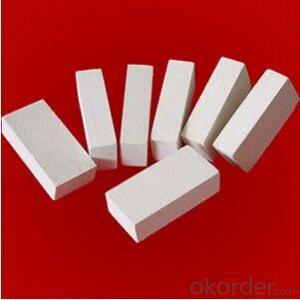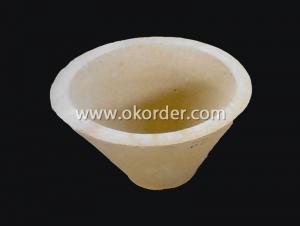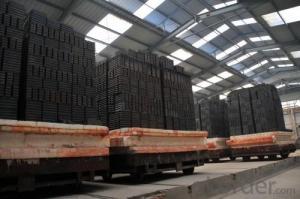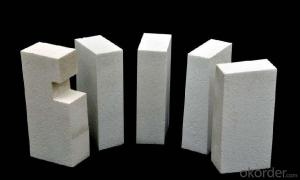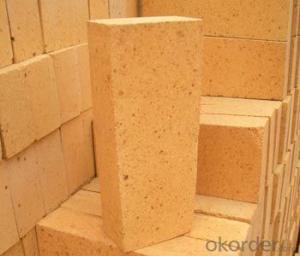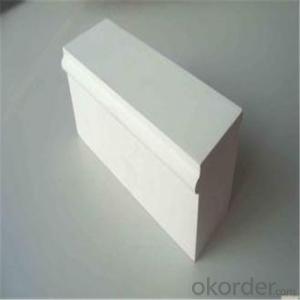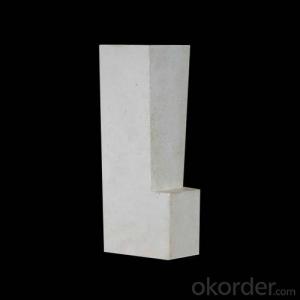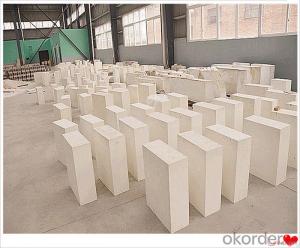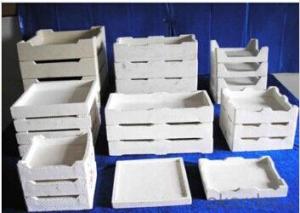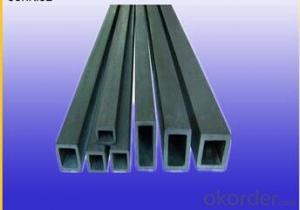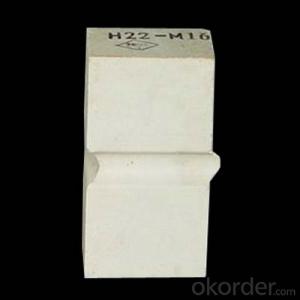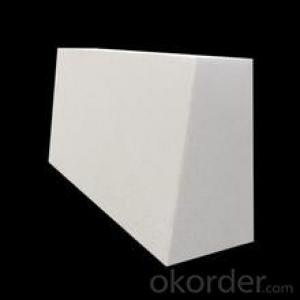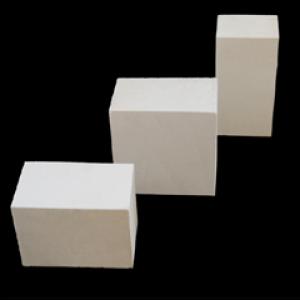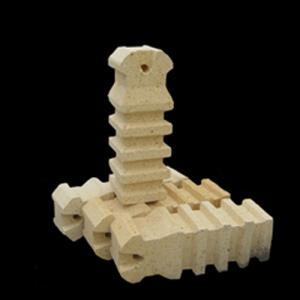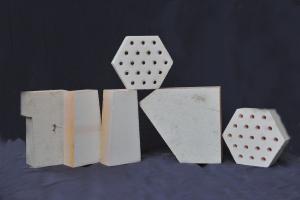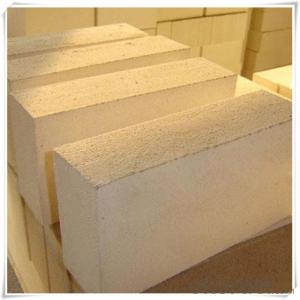Corundum Cordierite Kiln Furniture Brick
- Loading Port:
- China Main Port
- Payment Terms:
- TT OR LC
- Min Order Qty:
- -
- Supply Capability:
- -
OKorder Service Pledge
OKorder Financial Service
You Might Also Like
1. The mullite cordierite kiln furniture has been widely used as sanitary ware, household pottery, glass-ceramics, magnetic material, etc.
2. The products mainly are hollow deck, solid deck, pillar, bracket, suspended roof brick, perforated board, and other special shaped products.
3. The kiln furniture is elaborately prepared, which is characteriazed by good quality, good thermal shock resistance and good high temperature performance.
4. It has applied in many plants with good performance and can substitute the imported products.
| Item | Lirr-mc-01 | Lirr-mc-02 | Lirr-mc-03 | |
| Apparent porosity,% | 28 | 28 | 26 | |
| Bulk density,g/cm3 | 1.95 | 1.98 | 2.0 | |
| Modulus of rupture, | 20℃ | 12 | 14 | 12 |
| 1250℃×0.5h | 8 | 12 | 10 | |
| Phase composition,% | Mullite | 50 | 55 | 50 |
| Cordierite | 40 | 30 | 40 | |
| Max. service temp. | 1250 | 1280 | 1280 | |
| Chemical composition,% | Al2O3 | 40-45 | 40-48 | |
| SiO2 | 45-48 | 45-48 | 45-48 | |
| MgO | 5-10 | 5-8 | 5-10 | |
Conventional index:
AL2O3: 90%
Using temperature: 1650°C
Volume density : 3.0g/cm3
porosity rate: 15%
Use:
High temperatuer sintering alumina/zirconia ceramics products;
Characteristic:
Our high purity alumina kiln furniture prevent contamination to add value in any elevated temperature process
is very superior performance
- Q: How much is a thermal brick?
- If you really want to buy thermal insulation brick, do not simply look at the price, but also to consider the quality of the product. (a piece of brick in the market basically in 6 yuan, if there is a floating price if it is because of the size of the insulation brick or distance, but floating slightly.)
- Q: What is the price of concrete self insulation bricks?
- Insulation brick prices also have a great relationship with the material and workmanship, such as clay brick price is much lower than high alumina brick, mullite and corundum brick prices will be higher.
- Q: What's the jade stove for?
- Corundum furnace for corundum smelting furnace, usually electric arc furnace for smelting dense corundum, corundum, white corundum, zirconia corundum, magnesia, magnesium aluminum spinel and fused refractory materials, professional design, Xi'an Xinda furnace engineering limited liability company manufacturing corundum furnace.
- Q: What equipment is used for producing diamond blanks? How much is the investment?
- Plus all the cables fifty thousand. Steel 10000 yuan. Corundum bricks; insulating bricks; clay bricks, these three require more than ten thousand. The electrode is about one hundred thousand. It's just an investment in an electric furnace. Together with the rear section processing and raw materials need hundreds of thousands of.
- Q: Which is good, glazed brick and whole cast glazed brick?
- Vitreous tile is all ceramic tile, the material is hard, strong wear resistance, smooth finish is very good, in general, looks very bright. Microcrystalline brick, corundum brick Market said, they really mean bohuazhuan. Because of its low water absorption and high strength and hardness, glazed tile has been widely used. Many hotels, shopping malls and office space are widely used glass tile.
- Q: Can the PE sintering plate dust collector be suitable for dust removal in the coking plant?
- Do not know where the coking plant do dust treatment, processing conditions are different, the dust collector is not the same
- Q: Is liquid phosphoric acid two aluminum hydrogen flammable?
- Two aluminum liquid hydrogen phosphate using spray paint, cement, refractory castable and binder for foundry industry, mainly used in refractory industry corundum, chromium corundum nozzle coal water slurry gasifier with chromium aluminum zirconium corundum brick production.
- Q: What are the main constituents of refractory bricks?
- Clay brick and clay brick are mainly composed of mullite (25% ~ 50%), glass phase (25% ~ 60%) and square quartz and quartz (up to 30%). Usually with hard clay as raw material, pre calcined mature material, and then with soft clay, semi dry or plastic molding, the temperature at 1300~1400 C fired clay brick products. Can also be added a small amount of water, glass, cement and other binders to make non burning products and amorphous materials. It is a refractory brick commonly used in blast furnaces, hot blast furnaces, heating furnaces, power boilers, lime kilns, rotary kilns, ceramics and refractory bricks.
- Q: What are the refractory materials?
- Acid refractory with silicon oxide as the main component, are commonly used in brick and clay brick. Silica is silica containing more than 93% silica products, raw materials used in silica, silica and other waste, the acid resistance of slag erosion ability, high load softening temperature, volume shrinkage after repeated burning, or even a slight expansion; but it is vulnerable to the erosion of basic slag, low thermal shock resistance. The brick is mainly used for thermal equipment of glass furnace, coke oven, acid furnace etc.. Clay brick with refractory clay as the main raw material, containing 30% to 46% of alumina, weak acid refractory material, heat shock resistance, resistance to acid slag, widely used.
- Q: What can zirconium sponge do for those industries?
- Zirconium metal, also known as sponge zirconium, silver gray metal, the appearance of steel, shiny; melting point 1852 points, sub points, boiling point 4377 density 6.49. Zirconium is easy to absorb hydrogen, nitrogen and oxygen; zirconium has a strong affinity for oxygen; at 1000 DEG C oxygen dissolved in zirconium can make its volume increase significantly. Zirconium is relatively stable in the air; powder zirconium is easy to burn; fine zirconium wires can be ignited by matches; at high temperatures they can be combined directly with dissolved oxygen, nitrogen and hydrogen.
Send your message to us
Corundum Cordierite Kiln Furniture Brick
- Loading Port:
- China Main Port
- Payment Terms:
- TT OR LC
- Min Order Qty:
- -
- Supply Capability:
- -
OKorder Service Pledge
OKorder Financial Service
Similar products
Hot products
Hot Searches
Related keywords
